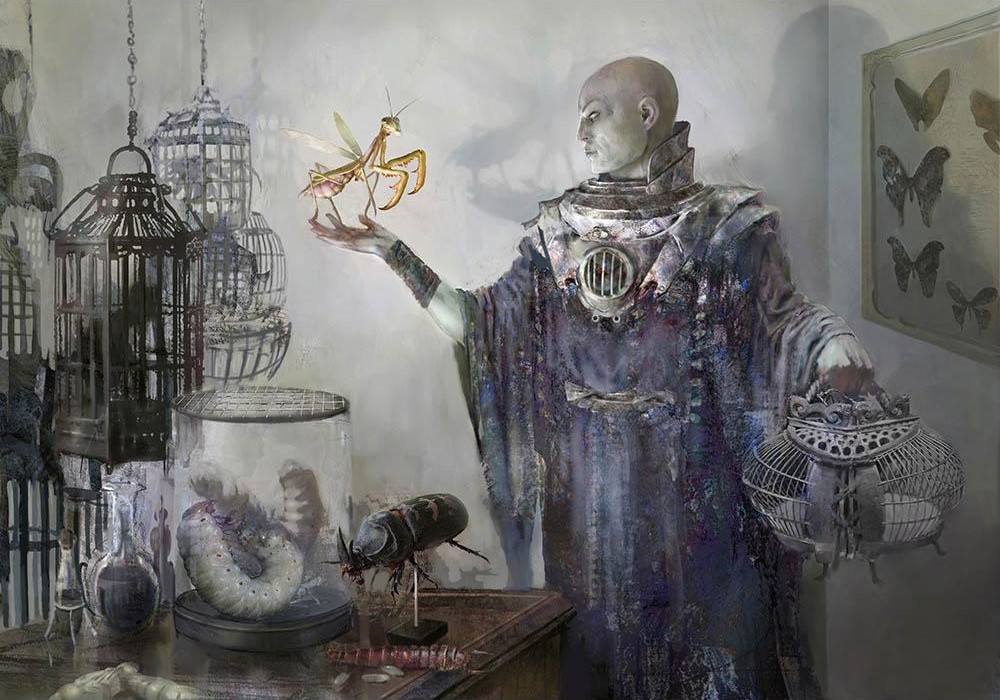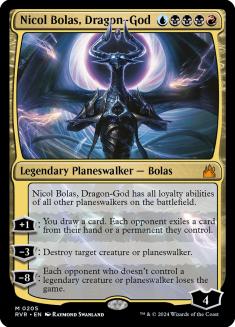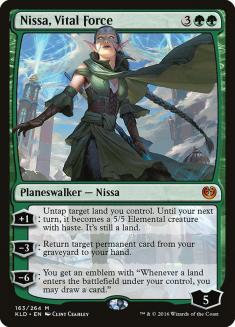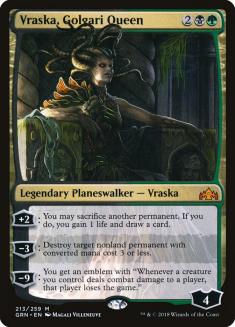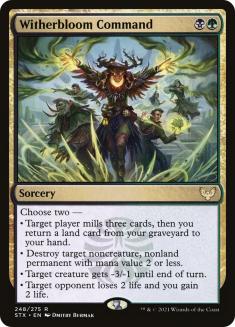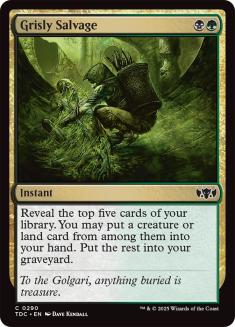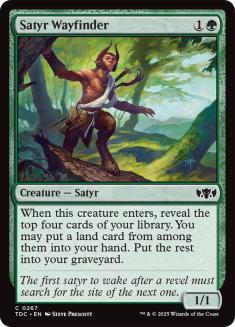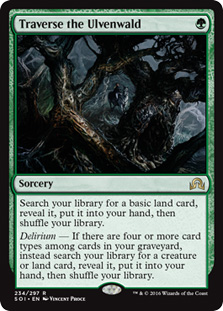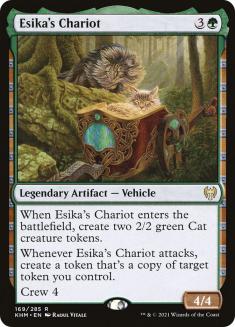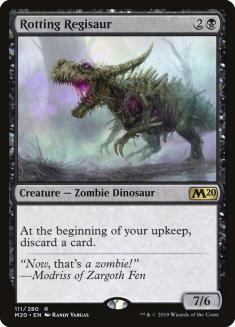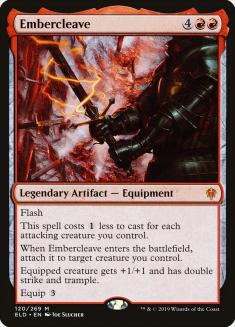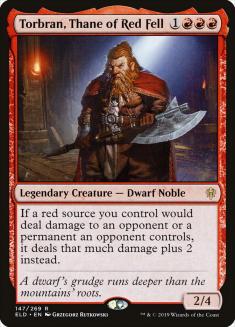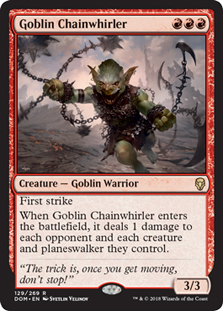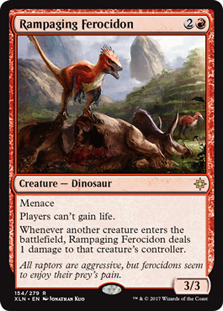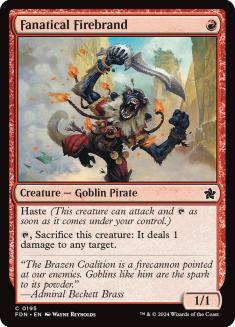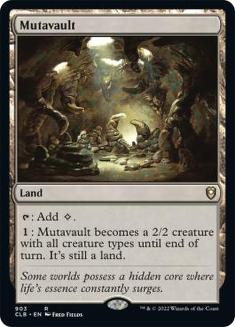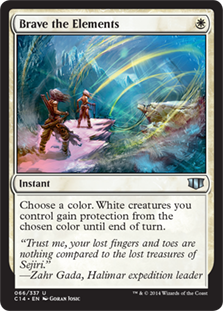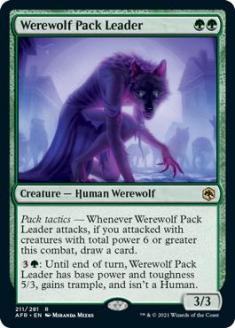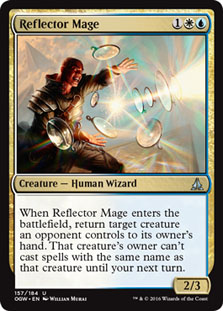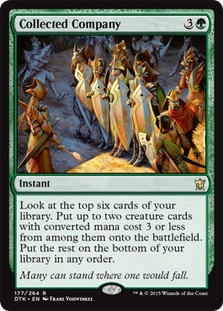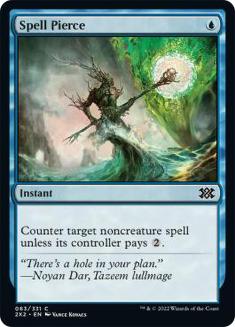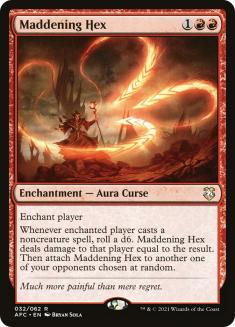As I write this, I’m counting down the days until I get to cross the border again for SCG CON Baltimore. The last time I was planning to head there for a tournament, the onset of the pandemic suddenly shut down the world – the #SCGBALT hashtag on Twitter is a snapshot of a strange historical moment.
Teams hoping to succeed in the Team Constructed $25K will have to master the biggest competitive Constructed formats in Pioneer and Modern, and get up to speed in Legacy – perhaps for the first time in years. Pioneer and Modern have the community’s attention every week, but it’s worth checking in on the recent developments there to stay ahead of the curve.
Pioneer
The big picture in Pioneer is mostly the same. Rakdos Midrange is still winning everything by milking value from every three-drop under the sun. If you enjoyed Izzet Phoenix before, you can enjoy it now. Shaheen Soorani can play Azorius Control and feel happy about it.
Beyond that, there is some interesting churn on the margins.
Creatures (17)
Planeswalkers (10)
Lands (21)
Spells (12)

This combo-focused take on Mono-Green Devotion took Pioneer by storm, but met with strong resistance. It went from hero to zero in the space of a few weeks, vanishing from the Pioneer Challenges on Magic Online (MTGO).
As Pioneer returns to paper play, Mono-Green has found its position in the format – not the consensus best deck by far anymore, but a strong deck whose best draws will bulldoze any opponent. I expect to face Mono-Green Devotion several times in the tournament and that matchup is a litmus test for any deck I consider playing myself (and to tackle the obvious question, the mirror is just as miserable as it looks).
Recent innovations span the maindeck and sideboard. The Chain Veil quickly earned tenure in the Karn, the Great Creator toolbox as it makes the Pestilent Cauldron loops much more streamlined, but the roster of planeswalkers has changed too. Nicol Bolas, Dragon-God is accessible via Oath of Nissa or Storm the Festival and gives you more good hits for the latter, making that expensive gamble easier to stomach. It’s strong in those situations as a fair card but also doubles as a combo piece by pretending to be Kiora, Behemoth Beckoner to untap Nykthos or giving you another way to access Karn’s creations. Maybe one day an actual Grixis deck will be a playable shell for its iconic planeswalker, but I’m not holding my breath…
Some of these lists have also turned to Nissa, Vital Force, which can untap Nykthos, Shrine to Nyx like any Nissa worth the name but can also return other planeswalkers to keep these chains going. It’s a sign of these strange times that Nissa, Who Shakes the World – one of the scariest cards and strongest incentives in the original lists of Mono-Green Devotion in Pioneer – isn’t even the most popular Nissa here anymore.
When your Mono-Green Devotion opponent played an Overgrown Tomb, that used to be a small sacrifice to unlock black mana for a lethal Pestilent Cauldron via an elaborate Karn into Golos, Tireless Pilgrim sequence. Now, that Tomb might represent an entire black splash.
Vraska, Golgari Queen lets you cycle through redundant mana sources or Oath of Nissa to find more action, is a maindeckable answer to threats like Thing in the Ice or Illuminator Virtuoso that can overwhelm you quickly, and offers yet another combo line featuring Ugin’s Nexus via Karn. Fatal Push is the most efficient removal spell of its kind and the best one against fast creature decks where you don’t want to be overly reliant on untapping with Llanowar Elves. This small splash opens up even more options for Karn, from Wishclaw Talisman to Sphere of Annihilation.
Creatures (16)
Lands (20)
Spells (24)
Sideboard

Greasefang, Okiba Boss has finally found a home that lets it live up to its obvious potential. Esper and Mardu Greasefang were more commonly seen in the early days of Kamigawa: Neon Dynasty, but this Abzan approach – courtesy of reigning Set Championship winner and MTGO phenomenon Jan-Moritz Merkel – is now the default.
Green doesn’t have the direct discard outlets of these other colours, yet has more self-mill effects than you could ever need. Satyr Wayfinder, last seen in Constructed alongside Hogaak, Arisen Necropolis, is a natural star here, while Grisly Salvage is both a tutor for Greasefang and an enabler for it.
Witherbloom Command is hit-or-miss as an enabler, but is phenomenal when it can reliably remove permanents. Unlicensed Hearse is everywhere, and Command is the ideal response. Meanwhile, one-toughness creatures are increasingly popular and Command is part of a larger backlash against them.
Green also gives you Esika’s Chariot, another Vehicle to return with Greasefang that’s much more castable than Parhelion II when you need a backup plan. As in Naya Winota, Chariot runs over anyone who is overly reliant on narrow hate cards for your namesake creature.
Rotting Regisaur is a recent innovation – another must-kill threat whose drawback can be exploited as a discard outlet for Parhelion II. Regisaur shrugs off damage-based removal like Fiery Impulse or Lightning Axe against the Izzet decks and Can’t Stay Away brings it back for more against the few removal spells that do hit it.
Creatures (26)
- 4 Burning-Tree Emissary
- 4 Eidolon of the Great Revel
- 2 Monastery Swiftspear
- 3 Kari Zev, Skyship Raider
- 4 Fanatical Firebrand
- 4 Bonecrusher Giant
- 2 Torbran, Thane of Red Fell
- 3 Anax, Hardened in the Forge
Lands (23)
Spells (11)

Mono-Red Aggro is as familiar in Pioneer as in any format, but this latest iteration looks a lot different from the lists popular a few months ago. Gone are the Monastery Swiftspears and Soul-Scar Mages backed up by a flurry of burn spells – this list is much more permanent-heavy, topping off with the trio of Embercleave, Anax, and Torbran that did such good work together in Standard.
This sideboard is a reunion for the red three-drop Hall of Fame. Goblin Chainwhirler is still phenomenal against one-toughness creatures while attacking freely into every other red deck’s Bonecrusher Giants and making blocks on your other creatures even riskier. Rampaging Ferocidon nullifies a big problem card in Kalitas, Traitor of Ghet and is the ideal trump against decks like Mono-Green Devotion hoping to clog up the ground.
Ultimately, the unassuming Fanatical Firebrand makes the clearest argument for this approach. In many formats (including many past iterations of Pioneer), this would be a poor one-drop. Here, picking off a Llanowar Elves or Elvish Mystic against Mono-Green Devotion is a vital goal and Thalia, Guardian of Thraben is a rising star right now.
Creatures (32)
- 4 Thalia, Guardian of Thraben
- 2 Soldier of the Pantheon
- 1 Kytheon, Hero of Akros
- 4 Thalia's Lieutenant
- 4 Dauntless Bodyguard
- 4 Luminarch Aspirant
- 4 Brutal Cathar
- 3 Adeline, Resplendent Cathar
- 4 Hopeful Initiate
- 2 Extraction Specialist
Lands (22)
Spells (6)

Creatures (33)
- 4 Thalia, Guardian of Thraben
- 4 Experiment One
- 4 Reflector Mage
- 4 Thalia's Lieutenant
- 3 Charming Prince
- 4 Werewolf Pack Leader
- 3 Adeline, Resplendent Cathar
- 4 Hopeful Initiate
- 3 Extraction Specialist
Lands (23)
Spells (4)

I don’t know what happened to me to make me want to cast Thalia in every format, but Pioneer gives me several options on that front. We shouldn’t automatically group these decks together – the other threats in these decks have little in common beyond their creature type – but they both exploit the same weakness in the format.
As well as a lower curve and a pristine manabase, Mono-White Humans enjoys a pair of exclusive tools. Mutavault is an excellent card with no other obvious home in Pioneer, while Brave the Elements steals games that no other card – and no other aggro deck – could win.
Bant Humans has stronger individual threats at the cost of a highly ambitious manabase. Casting Collected Company is no guarantee of success – and here, casting it in the first place isn’t guaranteed either.
Modern
You don’t need me to fill more column inches talking about Murktide Regent or Puresteel Paladin, and I just wrote about the newest Omnath creations. Cascading into Living End is still obscenely powerful.
You can’t go wrong with any of those decks, but they have some new contenders to fend off.
Creatures (4)
Planeswalkers (4)
Lands (25)
Spells (27)

Temur Indomitable Creativity is the talk of the town at the moment, tearing up tournaments online and offline. This list is much sleeker than the Four-Color lists that were in vogue last year – Teferi, Time Raveler and Prismatic Ending are appealing cards in general and here in particular, but they place unreasonable demands on a manabase that’s already stretched thin. Leaning into green instead opens up Explore to enable Turn 3 Indomitable Creativity, as well as useful sideboard tools like Veil of Summer and Nature’s Claim.
It feels odd to call Spell Pierce an innovation, given the card’s decade-long record of success across a range of formats and archetypes, but it’s one of the main draws to this deck – it gives you the speed to keep up with the fast linear decks, yet also helps you to navigate your expensive payoff spells through the Counterspells and Force of Negations that threaten to trade with them cheaply. Flusterstorm and Veil of Summer reinforce this where applicable – this red-heavy combo deck suddenly somehow has access to more cheap counters than any other deck in the format.
Creatures (18)
Lands (18)
Spells (24)

Lovingly dubbed ‘Rakdos Scam’ by some of its pioneers in Quebec, this looks like just one more cute deck that occasionally puts up results, but it fills a specific niche in Modern as perhaps the most appealing Thoughtseize deck now that Grixis Death’s Shadow has largely been edged out again by Izzet Midrange. The Evoke + reanimation synergies may steal the show, but the real appeal of this deck for me is that it is full of brutally effective hate cards.
Unfortunate Living End opponents have to slog through four maindeck Dauthi Voidwalker alongside Chalice of the Void and Unlicensed Hearse. Blood Moon is lights out against decks like Amulet Titan and can steal games even in matchups where it ‘shouldn’t’ be good. If you have to play an actual game of Magic, Ragavan backed up by discard and removal is a fine way to win that.
Creatures (28)
- 4 Chancellor of the Forge
- 4 Shardless Agent
- 4 Risen Reef
- 4 Omnath, Locus of Creation
- 4 Endurance
- 4 Fury
- 4 Wavesifter
Lands (25)
Spells (7)
Sideboard

This Elemental-themed take on Glimpse of Tomorrow is winning enough that it’s fair to say there are three separate Cascade decks you need to prepare for in Modern. Where the ‘stock’ list plays Fable of the Mirror-Breaker to solidify the fair backup plan and not risk being saddled with dead draws pre-Glimpse, lists like this have moved back to Chancellor of the Forge to set up bigger and better Glimpses at the risk of drawing a useless seven-drop sometimes.
I mention Glimpse not just because it’s incredibly fun and highly competitive but because I’ve seen many opponents ignore the telltale signs that they are facing this deck and get swiftly punished, from putting Chalice of the Void on the wrong number to tapping out because there’s only so much the average Elementals deck can do on Turn 3, right? Khalni Garden should give that game away, and Risen Reef in a 60-card deck without Kaheera should set off alarm bells. Know what to look for so that you don’t hand the Glimpse player a golden opportunity.
Legacy
Touching on Legacy in these virtual pages is a rare treat, and a team tournament is a great excuse to check in with a format that used to be a staple of the SCG Tour back in the day.
Creatures (12)
Lands (18)
Spells (30)

Creatures (12)
Lands (19)
Spells (29)

It should come as no surprise that Izzet Delver is the best deck in Legacy yet again. At this point anyone who assumed that banning Ragavan (or Dreadhorde Arcanist, or Wrenn and Six, or whatever the most recent and obvious culprit is) would fix the problem isn’t paying attention. Until something fundamental changes – and there are no signs of that happening – Delver will be Legacy’s gatekeeper.
Delver of Secrets itself isn’t the must-play card it once was. As in the Ragavan era, Zoomer extraordinaire Isaac Bullwinkle has demonstrated that the Izzet core is more flexible than it seems and doesn’t need to be pigeonholed as a ‘tempo’ deck. His approach makes a lot of sense in the pseudo-mirror, but is mostly an online phenomenon for now.
A weird quirk of the online results is that one of the most important Legacy cards released this year is completely absent from MTGO. Maddening Hex fills the slot previously reserved for cards like Court of Cunning as a relatively expensive hammer for the control matchups, but this one also dunks on any spell-based combo deck. This card is a game-changer – if your deck is weak to Hex, don’t assume your matchup against the Izzet decks is as solid anymore.
The basic recommendation here is the same as always: play Izzet Delver unless you have a very good reason not to. If you’re playing something else, your Delver matchup isn’t as good as you think.
Unless, perhaps, you’re Marit Lage.
Creatures (12)
Planeswalkers (1)
Lands (28)
Spells (19)

This deck boasts the best Delver matchup of any mainstream deck in Legacy. The Dark Depths + Thespian’s Stage combo is a one-turn clock that dodges most of their interaction, Elvish Reclaimer and Knight of the Reliquary set up this combo while being formidable threats in their own right that quickly outsize Lightning Bolt, and cheap removal ranging from Swords to Plowshares to Prismatic Ending (and Pyroblast / Red Elemental Blast prompting a splash by itself in the Naya lists) buys you the time you need.
The issue is everything else – traditional control decks are tough matchups, the recent combo-control decks are even worse, and combo decks that aren’t reliant on the graveyard are a problem. That said, if you expect to see a lot of Volcanic Islands and few Tundras, Savannahs are a great choice.
Creatures (14)
Lands (16)
Spells (30)

Creatures (18)
Lands (17)
Spells (25)
- 2 Trinisphere
- 4 Blood Moon
- 4 Chalice of the Void
- 4 Chrome Mox
- 4 Shatterskull Smashing
- 4 Fable of the Mirror-Breaker
- 3 Unlicensed Hearse
Sideboard

Ancient Tomb into Chalice of the Void for one is a time-honored strategy, but the decks built to do that usually have little else to recommend them. That has changed completely over the past year – both of these decks now have enough strong threats that a fast Chalice is just one useful tactic. These are more accessible and easier to play than most Legacy decks and get their fair share of free wins, making them great choices for teams wondering how to fill their Legacy seat.
Creatures (4)
Planeswalkers (9)
Lands (20)
Spells (27)

Finally, fans of classic control are well-served in current Legacy. The Top 8 of the Legacy Challenge that featured this list also contained two other Jeskai Control decks with a wide spread of card choices, from Timeless Dragon as a threat that lines up hilariously well against Izzet Delver to the Narset, Parter of Veils + Day’s Undoing combo. Other lists explore new combos powered by Displacer Kitten or lean on Monastery Mentor as a finisher.
This is just the tip of the iceberg – each of these three formats is very diverse beneath the top tiers and there are curveballs lurking behind every corner. Hopefully this leaves you more prepared to hit some of them!

